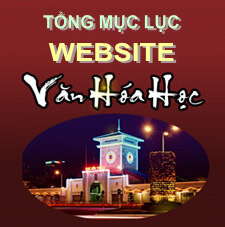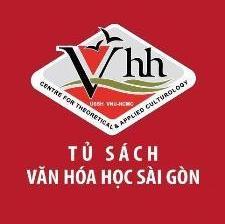Over the last decade, Korea has been responsible for a television phenomenon known as "Hallyu" -- often called the Korean Wave -- with a number of dramas, including "Autumn Fairly Tale," "Winter Sonata" and "Daejanggeum" ("Jewel in the Palace"). Its popularity has spread to a number of East Asian countries, including Vietnam, creating a cultural flow in contemporary Asia. The rising success of Korean dramas was soon matched by Korean movies, popular music, food and language. More importantly, it was related to Korea's growing power and the rise of global multinationals such as Samsung, LG and Hyundai-Kia.
In Vietnam, on the other hand, the Economic Renovation launched by the Vietnamese Government in 1986 -- as a switch from a subsidised period to an open market economy -- has had a vital impact on Vietnamese media. This paper will focus on the following issues: the media's landscape and consumption in Vietnam, policies issues regarding media content imports, focusing on Korean dramas, and a number of issues for establishing a common ground and vision for building a pan-Asian cultural content community.
The media landscape in Vietnam
The Economic Renovation launched by the Vietnamese Government in 1986 did not only transform Vietnam from one of the world's poorest countries in the 1980s, to one of the most successful countries in the world in terms of economic growth, but also had important impacts on Vietnamese media. Vietnamese audiences, who found it difficult to subscribe to a newspaper in the subsidised period, started to enjoy a wide range of choice in the media. More significantly, even though the mass media in Vietnam are under the Government control, after 1986, for the first time, they had to compete to maximize their audiences in order to increase income from subscriptions and advertisers, and also to justify continued financial support from government.
From 1995 to 2007, the number of newspapers published more than doubled, increasing from 375 to 867. The Vietnamese radio network is comprised of hundreds of radio stations, 11 of which are controlled directly by Voice of Vietnam. In addition, there are 64 provincial radio stations and 606 district radio stations, amongst which there are 288 FM radio stations.
In terms of television, the national television station has five channels. There are also 4 regional and 64 provincial television stations. As there are a number of television stations offering 3-5 channels, the total number of television channels in Vietnam is approximately 100 (excluding cable television channels). VTV, the only nation-wide TV station in Vietnam, was formed in 1970 from an editorial department of VOV. In 1976, it was separated from VOV and became an official name in 1987.
Vietnam is also amongst the top countries in the ASEAN for internet use, with an increase of 32.5 percent per year. At present, 23.5 percent of the population in Vietnam are web users.
Regarding movies, after a significant decline in the last decade, at present, there are 19 cinemas in Hochiminh City and 15 in Hanoi, and approximately from 3 to 4 cinemas in each province. Amongst those there are a number of modern and luxury cinemas with more than 500 seats, for example the Vincom cinema group in Hanoi. Since these modern cinemas were established, the number of attendances increased considerably. For example, the Megastar cinema group in Hanoi welcome 12,000 - 15,000 viewers each week. Hochiminh City continues to dominate the Vietnamese movie market which occupies 60 percent of total revenue from movie industry.
Having considered the internal development of media in Vietnam, it should be noted that the increase of media organisations and productions -- across all media -- provides greater opportunities for people to access public information. For the first time, listeners an viewers became consumers who could choose from a wider range of media products. Their needs were paid attention to, and mass media had to compete with each other and develop independently in commercial terms.
The impact of Korean popular culture
The impact of Chinese movies and later the "Korean wave" during the last decade, especially on young Vietnamese, has been a dramatic and significant phenomenon. As China and Vietnam are neighbours, Vietnam is influenced significantly by Chinese culture, which took root during the long Chinese occupation. However, Korean dramas are even more popular than the Chinese ones. Chinese movies were gradually replaced by Korean dramas on cinema and on television, after "Winter Sonata" broadcast nationally on Vietnamese television in the early 2000s.
In addition to the relatively reasonable price of Korean popular dramas, compared to Japanese and Hong Kong dramas, the attractiveness and content of Korean cultural products really attracted Asian production companies and Asian viewers. In Vietnam, during the 2000s, Korean dramas rapidly gained airtime on television channels, from the North to the South. At least four to five Korean dramas are broadcast every night. If the rebroadcasts by cable television channels are counted, the number goes up even more. In other words, Korean television dramas have been part of the daily programming of almost of all television stations in Vietnam in both afternoon and evening schedules, and their audience ratings surpass those of local dramas.
Young viewers in Vietnam have been attracted to the "modern image" seen in the lifestyles of Korea. The views and items portrayed in Korean cultural products, and the high standard of living, portrayed Korea as a dynamic and developed country. The modern images projected, all showed Korean television drama to be trendy, and Vietnamese realised that Korea was much more modern than they had thought it to be. Beyond enjoying Korean television dramas, the new generation of consumers are eagerly adopting and emulating Korean lifestyle ranging from fashion, food and consumption patterns and to even plastic surgeries.
For audiences in Vietnam, Korean television dramas are more suitable than American ones because the former retain traditional values while having achieved the technical sophistication comparable to the latter. Korean movies added to the Korean Wave by offering sensational scenes and plots, in a manner different from those offered by Hollywood or Bollywood. Apart from nice storylines, good production values, beautiful locations, excellent and gorgeous actors and actresses, many Vietnamese scholars attribute success of the Korean Wave to Confucian themes that East Asian cultures -- Vietnamese culture included -- are more familiar with. Korean dramas typically deal with traditional issues such as family values, the importance of respect for elders, fighting for one's true love, and filial duty in an age of changing technology and values.
Moreover, the successes of Korea, such as becoming the world's 13th largest economy and one of the world's top ten cultural exporters give many Vietnamese viewers a "Korean Dream" and an insight into the "Miracle on the Han River."
As the media is said to play a central role in shaping socio-economic structures, cultures and development dynamics, and to change cultural and political views worldwide (although the real power of media rests in hands of those with economic power), this paper will explore the Vietnamese current policies toward media content imports.
As mentioned previously, as Korean dramas are very popular in Vietnamese media and Korean culture and products have had significant impact on Vietnamese youth. So much so that critics are concerned that the spread of Korean popular culture could strip away the self-identity of young Vietnamese. Although the Korean popular culture may have an Asian dimension and characteristics, it may also carry with it values that contradict the local ones. A number of critics raised questions: To what extent do Vietnamese media enable Vietnamese people to understand Korean culture and people? What are the effects of Korean cultural content on Vietnamese youth? How does the craze for Korean cultural products affect the lifestyle and behaviour of Vietnamese youth? Will the love of Korean cultural products make the Vietnamese youth despise their own culture? And more importantly: how should we keep the self-identity of young Vietnamese?
Partly due to these pressures, a number of Government documents were issued to request the national and local Television stations to reduce foreign movies and dramas and increase the Vietnamese ones in order to balance the media content between foreign and domestic programs (Official document No. 5045/VHTT on the 1st December 2003 by the Ministry of Culture and Information; the Decree No.96/2007/ND-CP on the 6 June 2007).
Pan-Asian cultural content community
There are a number of factors and conditions for the rise of regional networks of cultural production. Asia's television marketplace is huge because the Asian population makes up more than 50 percent of the world's population, and the region's growing prosperity is attributable to the increasing middle class in these markets. With the rising expenditure taken by middle and upper class and youthful demographics of a prosperous East Asian region, the demand for more sophisticatedly cultural products and better quality services will correspondingly increase.
Although popular culture entertainment forms such as film and television are a Western invention, Asian people, with their own cultures and identities, have more diverse taste on TV programmes and are interested in popular content that is locally relevant, and regionally accessible. Therefore, Korean products are said to evoke a sense of familiarity among people in Asia.
However, there are signs that everything might not be so rosy for Korean dramas in Vietnam as well as the rest of East Asia. The Korean Wave is a topic of debate and doubts from many angles. Asian audiences have witnessed the success and decline of Hong Kong, Chinese movies, Taipei and Japanese dramas. There has been a historical stream of exchange and flows within predominantly ethnic Chinese areas by the early 1990s when the film and TV industry in the PRC were liberalised, heralding the start of the "Chinovelas" (Chinese novellas) fever. There also has been the flow of Japanese TV dramas into the rest of the region without corresponding import of TV dramas from elsewhere until the late of 1990s when "Winter Sonata" was broadcast. Some disparage the quality of Korean popular culture, which, they argue, spread only as an affordable replacement for the products of Japanese popular culture after the sudden economic drop of the 1990s. Many observers believe that it will not sustain its popularity and insist that its producers and artists will not be able to meet the demand for innovative products needed to continue attracting Asian audiences. Indeed, some argue that its popularity is already fading and it no longer interests Asian fans as much.
In addition, the structural context of media liberalisation in East Asia should be further taken into account. East Asia was not a region in which television programming trade was active up until 1980s. According to Waterman and Rogers, "countries of the Asian region as a whole have a relatively low dependence on imported programming, and a relatively very low dependence on intra-regional program trade" before the 1990s. Many Asian governments had for a long time been on the defensive against cultural influences from foreign countries. Recently, a number of governments, including Vietnam, Taipei and China considered limits on the broadcast of foreign shows.
Moreover, although many Asian cultures share similar traditions, the various cultures of Asia each developed their own ethnic identity through the interaction of history, environment, and culture.
Therefore, in order to promote Asian culture, value and identity, we should consider the content, creativity, culture and community. In addition, perhaps, cooperation should be considered in producing cultural products amongst Asian countries and strengthen the Asian identity, creating a fertile ground for the evolution of the Korean Wave into an Asian Wave.
Source: www.koreaherald.co.kr



























